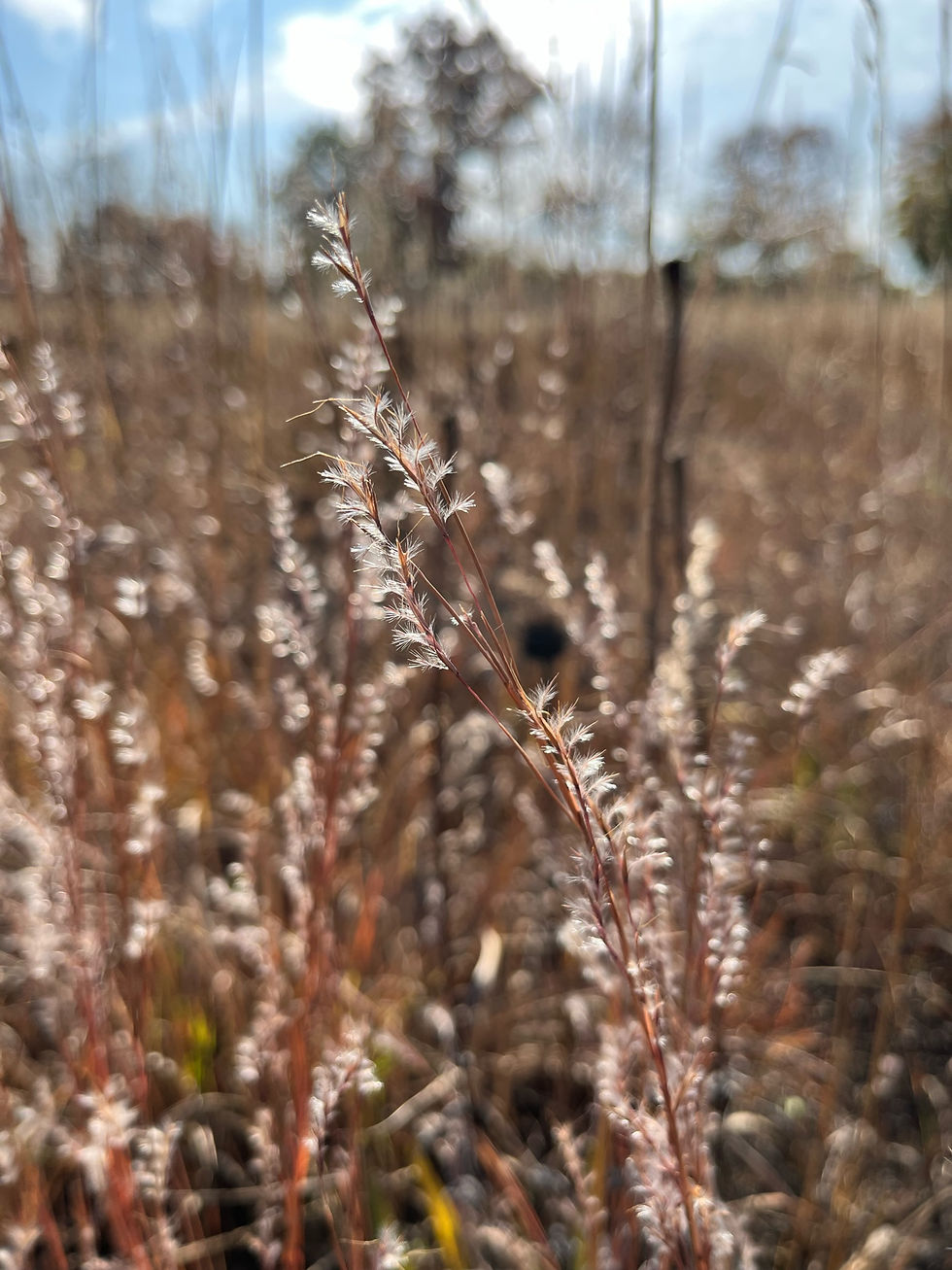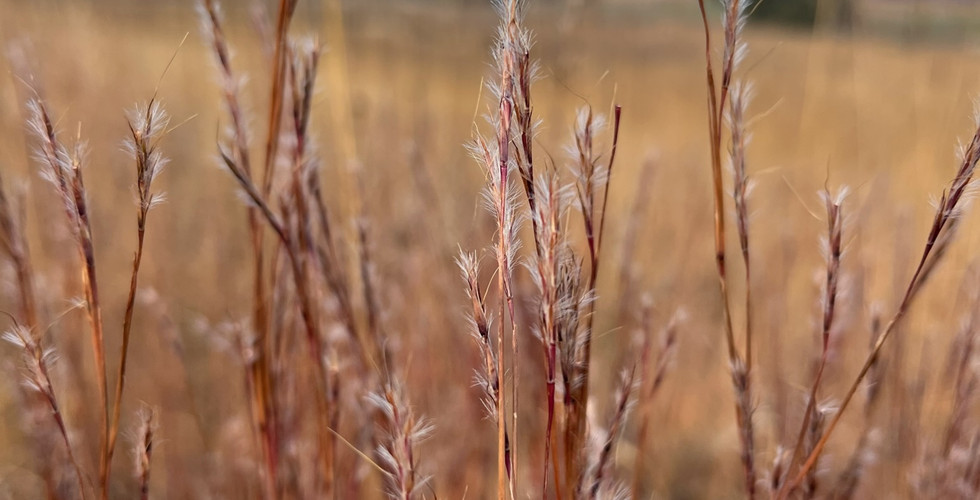November 4, 2023
- Sarah
- Nov 7, 2023
- 2 min read
Updated: Jun 19, 2024
It was a beautiful morning for the last seed collecting volunteer day of the year. We walked up a narrow path through a stand of tall, golden leaves to a hill covered in Indian grass, little bluestem, and a diverse assortment of withering forbs. The sun was shining from up through the stems, illuminating the feathery tufts of grass seeds.

The seeds we sought were those of little bluestem (Schizachyrium scoparium), a bunch grass reaching heights of up to four feet. Big bluestem (Andropogon gerardii), a bunch grass of a different genus, towers overhead at heights of up to eight feet. Both bluestem species are dominant in tallgrass prairies and begin the growing season with a blue tint to their leaves and stems, transitioning to shades of red, purple, and orange into the fall.
Little bluestem forms dense, round clumps, providing excellent nesting habitat for queen bumblebees over the winter. Little bluestem is also the larval host plant for several species of skipper butterflies. Its shorter height and lovely range of colors make it a great choice for garden beds that support pollinators.
We wove through the taller grasses, running our hands up the clusters of seed heads and dropping the dislodged clumps of seeds into our buckets. After several hours of collecting, the tiny seeds heads filled only the first couple of inches. As the sun grew brighter, the white tufts became easier to spot.

A pair of eagles nesting in a distant tree soared in wide circles above. A honey bee buzzed around my bucket and landed on me, crawling around until I gently brushed her away. As we walked back down the hill to take stock and disperse for the afternoon, it seemed as though we hadn’t begun collecting little bluestem; it glowed all around us, rustling in the wind and waiting for winter.







Comments